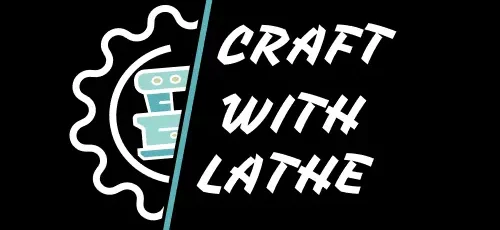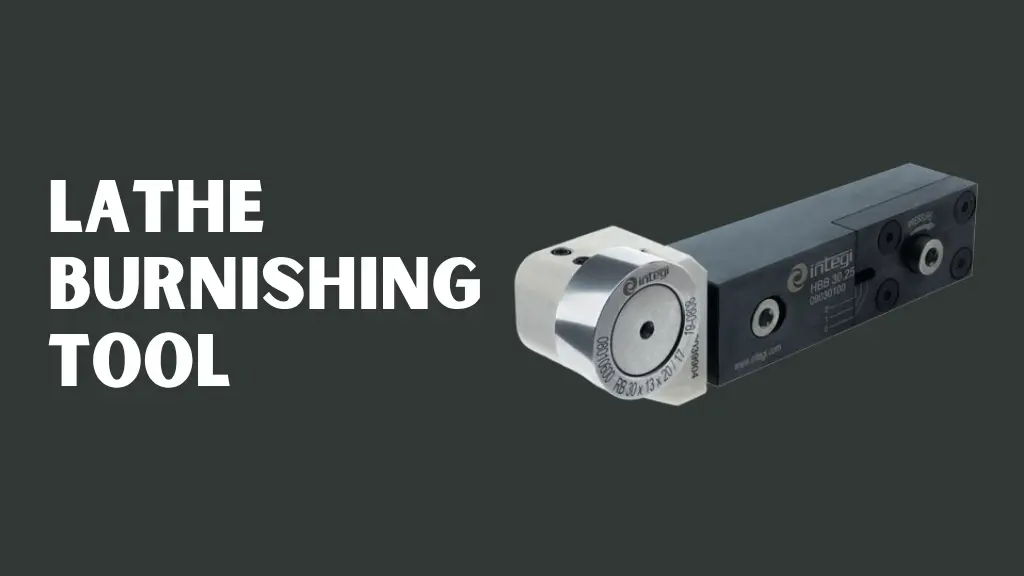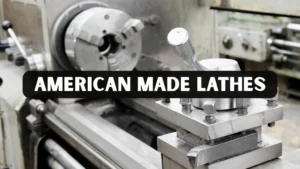In the world of precision machining, surface finish matters just as much as dimensional accuracy. Whether you’re in aerospace, automotive, or custom fabrication, achieving a smooth, mirror-like surface without secondary operations can dramatically improve efficiency and part quality. That’s where a lathe burnishing tool becomes indispensable.
Used for fine surface finishing, a lathe burnishing tool enables manufacturers and hobbyists to polish metal parts directly on the lathe. It improves surface hardness, enhances aesthetics, and eliminates the need for grinding or polishing in many cases. This comprehensive guide explores how these tools work, their benefits, best practices, and what to consider when choosing one.
What Is a Lathe Burnishing Tool?
A lathe burnishing tool is a mechanical finishing device designed to smooth and harden the surface of a machined part without removing material. Unlike grinding or abrasive polishing, burnishing uses hardened rollers or balls that apply pressure to plastically deform the surface, filling in micro-peaks and valleys.
Key Components:
- Roller head or diamond tip
- Tool holder (fits standard tool posts)
- Adjustable spring mechanism (for controlled pressure)
- Replaceable burnishing tips or rollers
Burnishing tools are commonly used on lathes, but also function on CNC turning centers, manual mills, and rotary tables.
How Lathe Burnishing Tools Work
Lathe burnishing tools operate through a process called cold working, which involves applying controlled pressure to the surface of a rotating workpiece. Rather than removing material, the tool compresses and smooths the outer layer, eliminating microscopic peaks and valleys. This results in a dense, polished surface with improved hardness and durability.
The Burnishing Process: Step by Step
-
Mount the Workpiece
Secure the workpiece in the lathe chuck as you would for standard turning operations. -
Install and Position the Tool
Mount the burnishing tool in the tool post. Align it at the correct angle and set the proper depth to ensure consistent contact with the workpiece. -
Set the Spindle Speed
Operate the lathe at a slow to moderate RPM (typically between 100 and 500, depending on the material and tool type) to allow effective surface compression without overheating. -
Apply Consistent Pressure
Slowly advance the tool into the rotating workpiece. Maintain steady pressure to uniformly compress the surface without causing deformation. -
Traverse the Tool Along the Surface
Move the tool laterally across the desired area. Monitor the surface quality and adjust the feed rate or tool pressure as needed for optimal finish.
Key Characteristics of Burnishing:
-
No Material is Removed:
The process reshapes the surface by pressing the material into itself rather than cutting it. -
Results in a Compressed Surface Layer:
This improves surface integrity, enhances hardness, and provides a high-quality finish.
Benefits of Using a Lathe Burnishing Tool
Lathe burnishing tools provide significant advantages over traditional finishing methods such as grinding, polishing, or sanding. Below are the key benefits that make them ideal for precision manufacturing:
1. No Secondary Operations Required
Burnishing can be performed directly on the lathe during or after the turning process. This eliminates the need to move the part to a separate grinding or polishing machine, reducing setup time and improving workflow efficiency.
2. Mirror-Like Surface Finish
With proper setup and tool selection, lathe burnishing can achieve exceptionally smooth surfaces as low as Ra 0.05 µm (2 microinches). This makes it suitable for components where visual appearance or tight tolerance surface finishes are critical.
3. Increased Surface Hardness
Burnishing compresses the surface layer of the material through cold working. This mechanical action improves surface hardness, enhancing wear resistance and extending the life of the part especially valuable in high-friction or load-bearing applications.
4. Cost-Efficient for Production
By eliminating secondary finishing steps and reducing tool wear, burnishing tools help cut down on labor, tooling, and cycle time. This makes them particularly valuable in high-volume or automated production environments such as CNC machining centers.
5. Environmentally Friendly Process
Unlike abrasive or chemical finishing methods, burnishing produces no dust, slurry, or hazardous waste. There is no abrasive media, no coolant contamination, and no need for chemical polishing agents, making it a clean and sustainable finishing solution.
Types of Lathe Burnishing Tools
Selecting the right burnishing tool for your lathe depends on several factors, including the material being machined, the geometry of the part, and the level of surface finish required. Below are the main types of lathe burnishing tools and their typical uses:
1. Roller Burnishing Tools
These tools use multiple hardened rollers that apply consistent pressure across the workpiece surface as it rotates.
- Best for: Cylindrical surfaces, external diameters, and internal bores.
- Benefits: Produces a uniform, mirror-like finish and improves dimensional accuracy.
- Common applications: Shafts, bushings, and hydraulic components.
- Available in both through-type (for longer parts) and stop-type (for shoulders) configurations.
2. Ball Burnishing Tools
This type uses a single precision-ground, hardened steel or ceramic ball held in place by spring-loaded pressure.
- Best for: Small parts, delicate features, and intricate geometries.
- Benefits: Simple setup and smooth operation on softer materials.
- Common applications: Aerospace components, medical devices, and decorative surfaces.
- Suitable for light-duty work where minimal force is required.
3. Diamond Burnishing Tools
These tools use a finely polished, diamond-tipped insert to plastically deform the surface.
- Best for: Extremely fine finishes on hard or heat-treated metals such as stainless steel, titanium, and tool steel.
- Benefits: Achieves superior surface finishes (Ra as low as 0.1 µm), extends component life, and eliminates the need for secondary polishing or grinding.
- Common applications: Optical components, high-precision shafts, and dies.
Each type of burnishing tool is available in various shank sizes and orientations, such as straight, right-hand, and left-hand models, to suit both manual and CNC lathes. Selecting the correct configuration ensures optimal contact angle and tool clearance for your specific machining setup.
How to Choose the Right Lathe Burnishing Tool
Selecting the correct burnishing tool depends on several key factors related to your material, part geometry, finish requirements, and lathe specifications.
1. Material Type
Different materials respond better to specific types of burnishing tools:
-
Aluminum, Brass, Copper:
Ball or roller burnishers are effective and gentle on soft metals. -
Steel, Stainless Steel, Titanium:
Harder materials benefit from diamond burnishing tools, which offer precision and durability.
2. Part Shape and Surface
The geometry of your workpiece determines the ideal tool:
-
Cylindrical Surfaces:
Use roller burnishers for consistent, even surface finishing. -
Flat Surfaces:
Ball or diamond-tipped tools are better suited for flat surfaces. -
Internal Bores:
Specialized internal roller burnishers are designed for reaching and finishing inside diameters.
3. Finish Requirement
Consider the final surface quality needed:
-
Standard Finishes:
Ball and roller burnishers typically suffice. -
High-Precision or Optical Finishes:
Diamond-tipped tools provide superior surface quality and reduced roughness.
4. Machine Compatibility
Ensure the tool shank fits securely into your lathe’s tool post or turret system. Tool rigidity and alignment are critical for optimal results.
Best Practices for Effective Burnishing
To achieve optimal results with lathe burnishing tools, follow these best practices during setup and operation:
1. Use Coolant or Lubrication
Apply coolant or light lubrication during the burnishing process to reduce friction and heat buildup. This not only protects the tool but also enhances the surface finish and extends tool life.
2. Apply Steady, Controlled Pressure
Maintain consistent pressure between the tool and the workpiece. Avoid applying excessive force, as it can cause deformation, damage the tool, or lead to uneven finishes.
3. Keep Tools Clean and Free of Debris
Clean the tool before and after use. Contaminants such as metal chips or residue can scratch the workpiece and reduce finish quality. A clean tool ensures smooth and uniform surface compression.
4. Match RPM to Material Type
Use appropriate spindle speeds based on the material.
- For most metals, slower speeds in the range of 100 to 500 RPM are ideal.
- Slower speeds help maintain surface control and prevent thermal damage.
Real-World Use Case: Aerospace Component Finishing
An aerospace manufacturer switched to lathe burnishing for finishing stainless steel valve bodies. Before the change, each part required post-processing with grinding wheels. After adopting diamond burnishing tools, surface finish improved to below Ra 0.1 µm, while production time per part dropped by 40 percent. The transition saved the company thousands annually in labor and rework costs.
Maintenance and Safety Tips
- Inspect rollers or diamonds regularly for wear or chipping
- Store tools in a dry environment to prevent corrosion
- Always wear safety glasses
- Keep speeds and feed rates within tool recommendations
Conclusion
A lathe burnishing tool is a powerful solution for machinists seeking high-quality surface finishes, improved productivity, and reduced costs. Whether you’re manufacturing precision aerospace parts or crafting custom components, burnishing tools offer a competitive edge.
FAQs
What materials can you use a lathe burnishing tool on?
Lathe burnishing works on aluminum, brass, steel, stainless steel, and some hard plastics. For hardened materials, diamond burnishing is recommended.
Can burnishing replace grinding?
Yes, in many cases. Burnishing can achieve similar or better surface finishes without material removal, but it’s not suitable for all geometries or tolerance corrections.
Do I need a special lathe for burnishing?
No. Most standard manual and CNC lathes can accommodate burnishing tools. Just make sure you have the right shank size and pressure control.
What’s the difference between burnishing and polishing?
Polishing removes material using abrasives. Burnishing compresses the surface without removing material.
How long do lathe burnishing tools last?
With proper care, tools can last for thousands of parts. Diamond tips generally last longer than roller or ball systems.




